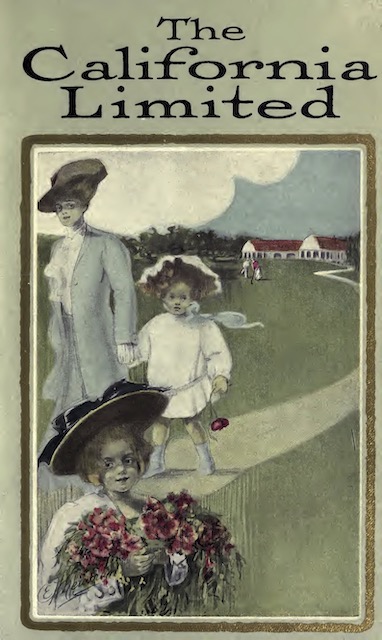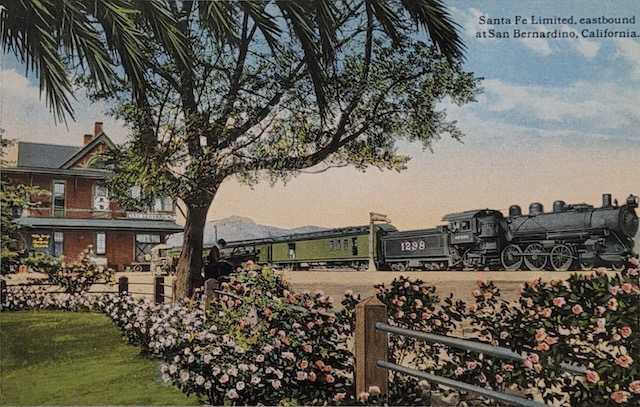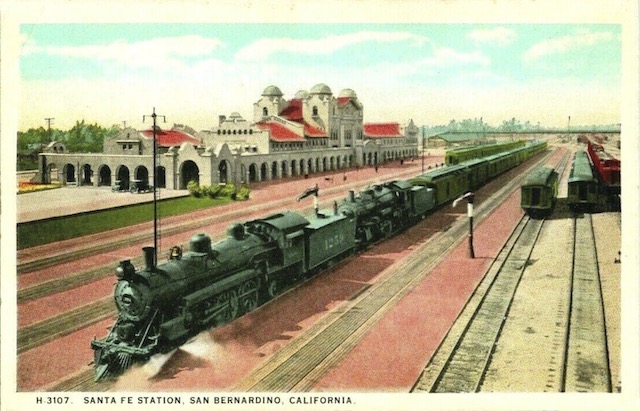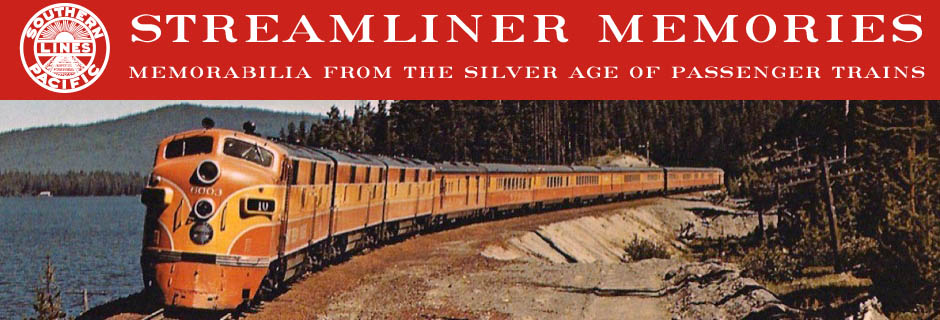We’ve previously seen booklets for the 1900-1901, 1904-1905, and 1906-1907 winter seasons. The one here, for the 1908-1909 season, says it is the “Fourteenth Season.” That suggests that the train didn’t operate for three seasons between 1892 and 1904 (which booklet said it was the tenth season). I’m not sure which seasons those were supposed to be as the train is listed in the Official Guide for all of those years.
 Click image to download a 2.3-MB PDF of this 16-page booklet.
Click image to download a 2.3-MB PDF of this 16-page booklet.
The above booklet says the train was six cars long:
- A baggage-club car with 20 seats in the lounge, a barber shop, and a small buffet;
- A 30-seat dining car;
- An all-room sleeping car with seven staterooms and two drawing rooms for a total of 20 beds;
- A sleeping car with ten sections and two drawing rooms, for a total of 26 beds;
- A sleeping car with ten sections, two compartments, and one drawing room, for a total of 27 beds;
- A sleeping-observation car with ten sections (20 beds), 15 seats in the lounge, and a large open platform.
That’s a grand total of 93 beds, plus I count 65 non-revenue seats plus whatever room was available on the rear platform. Since many of the non-revenue seats were in the diner, however, most people would end up staying in their seats or beds for most of the trip except when eating meals. In addition, families were allowed to double-up in berths, so it was possible for the train to carry more than 93 paying passengers. Still, it was a pretty exclusive train compared with most of its competition at the time.
Santa Fe acquired its first 4-6-2 Pacific-type locomotives in 1903 and such locomotives were probably used on the 1908 edition of the California Limited. They weren’t equipped with superheaters until well after 1910, but still produced well over 30,000 pounds of tractive effort. Depending on the vintage, Santa Fe 4-6-2s built before 1908 had 69″ to 73″ drivers, allowing for much higher speeds than the 4-6-0s with their 58″ drivers. Boiler pressures were 220 pounds psi, compared with just 160 for the 4-6-0s.

Click image to download a 224-KB PDF of this postcard.
The above postcard shows the “Santa Fe Limited” at the San Bernardino train depot sometime before late 1916, when that depot was destroyed in a fire. Santa Fe had no train called the “Santa Fe Limited,” and just about the only limited on its schedule was the California Limited, so that is probably the train shown here.
Locomotive 1298, shown in the photo, was built by Baldwin in 1910. Equipped with superheaters, it produced a respectable 42,791 pounds of tractive effort, more than twice that of the 4-6-0s shown in yesterday’s post, which is probably why the train didn’t need to be double headed.

Click image to download a 218-KB PDF of this postcard.
The Fred Harvey postcard shown above shows the replacement San Bernardino depot that was opened in 1918. In the foreground is a double-headed train that is at least 11 cars long. Since five of the cars appear to be baggage or express cars, this is clearly not the California Limited and the extra weight of those cars explains why it was double headed.
The first locomotive is number 1259, which was built in 1905 without a superheater but was retrofitted with on in 1918, so probably has it in this photo. Instead of a superheater, it was originally built as a compound locomotive, with one high-pressure cylinder and one low-pressure. The locomotive was “simpled” — meaning both cylinders operated at the same pressure — when the superheaters were added. The boiler pressure was reduced from 220 to 200 but the new cylinders were larger so the tractive effort increased from around 30,000 to 36,000 pounds.
Even with powerful locomotives like the 1298, the train probably still required double-heading over some of Santa Fe’s grades. In 1944, Otto Perry photographed a war-laden California Limited that required four locomotives to ascend a grade in New Mexico: a 2-8-8-2, two 4-8-2s, and a 2-10-2. The combined tractive effort of these locomotives would have been 275,000 pounds! That must have been a sight to see.
